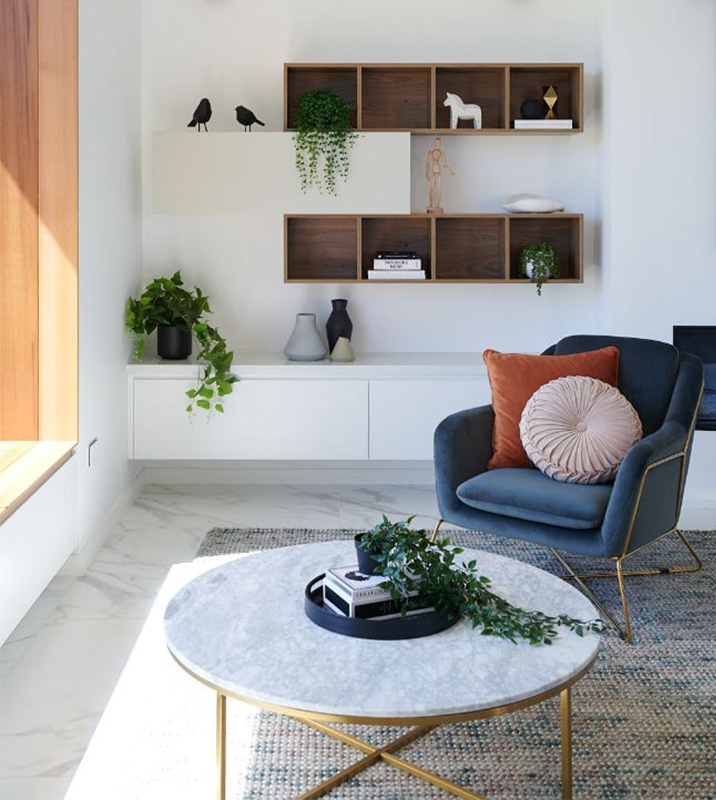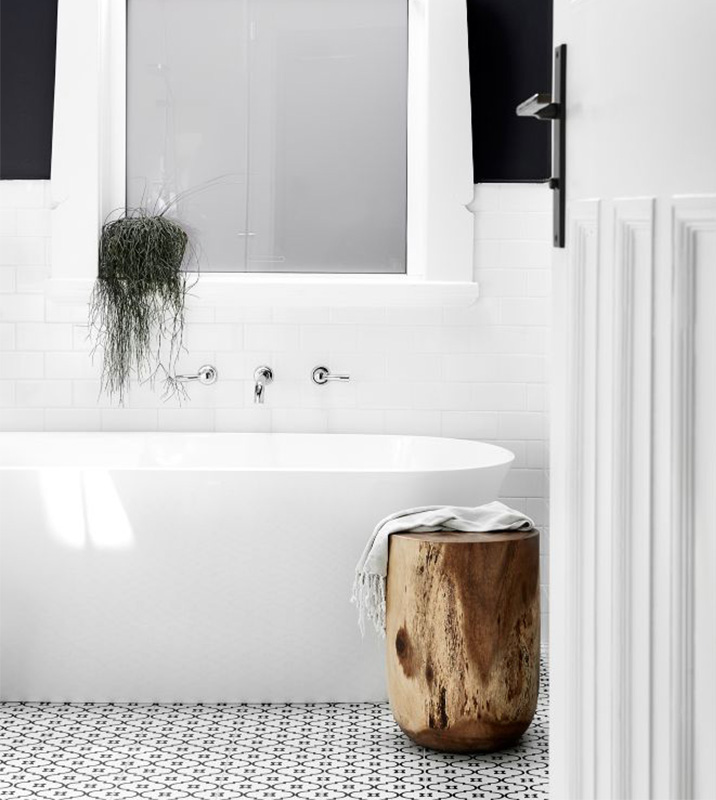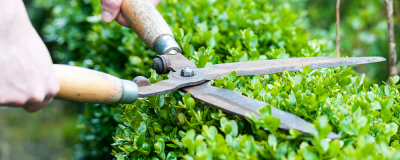
Find a local gardener
- Inspiration /
- Outdoor projects /
- Gardening & landscaping /
- A complete guide to...
A complete guide to indoor plants
Which type is best for your home & how to care for them?
Indoor plants have become a calling card of the millennial decor, and with good reason. Once extremely popular (the 1970s saw a boom in indoor plant life), this style is suddenly back in vogue. Try it out – you might be pleasantly surprised at the difference in the house after you bring some flora inside.
If you’re looking to hop onto the trend and unsure where to start, here’s some helpful tips on which plantlife might be the best addition to your home.
Benefits of indoor plants
Indoor plant life can add a real boost to your home. A few of the right kinds of plants can add a touch of beauty to any room in the house, especially for extremely urban environments where nature is limited to what springs up between the cracks in the cement. In those cases, you should definitely try to add just the slightest touch of green to your life. Having plants around is also very relaxing. Coming home to see your plants grow is automatically revitalising and helping to take care of them can serve as a calm, soothing release after a long day.

Another bonus? Plants will help clean and purify the air around you – removing pollution. So not only will your house look better, you’ll breathe better in it. You don’t even need a whole garden’s worth of plant life; just one or two will work wonders!
Types of indoor plants
There are a myriad of options when it comes to selecting a type of indoor plant. While considering your options, it’s important you consider how much maintenance and light they require – and if that fits your home and lifestyle.
If you decide to bring a few plants inside your house, there are a few specific species you should try.
- Weeping Fig plants are extremely durable. If you’re the forgetful type who might go a few days without watering or caring for your plants, this kind of plant should still be just fine. Weeping Figs also last for quite a long time.
- Peace Lily plants are quite beautiful and grow fine in darkened parts of the house; just be sure not to overwater them.
- Philodendron, or”Xanadu” plants are compact plants that also do very well in darker areas.
- Lady Palm trees grow very slowly but look very beautiful – just ensure that they are placed in rooms without air conditioning.
- Dracaena trees are also very elegant, but need to be watered constantly.
- Poinsettias aren’t just for Christmas anymore. They do very well as indoor plants and add a nice touch of colour to any apartment.
- Orchids add an exotic, gorgeous touch to any home, and they also come in plenty of beautiful varieties.
Caring for your indoor plants
Select plants which go with the overall room decor. Indoor plants are the perfect way to decorate an empty corner, or as a room divider, or as a connecting link between your indoor and outdoor areas.
Tending to your indoor plants
Plants need to adjust to a new environment before they can be permanently left indoors. They can be taken indoors anytime, if you have a year around regulated heating system at home. If not, try to get the plant acclimatised before bringing it indoors fully, in order to avoid damage. Place it on the southern end of the house where it will not get direct sunlight, while also reducing the quantity of food and water afforded it. You can ascertain whether it has adjusted well and take it indoors when it shows signs of new growth.
Plants have growth spurts during the warmer season, and should be taken outdoors to have fertiliser applied. Water soluble fertilisers have an advantage over organic ones as they are odourless. Fish and organic seaweed are perfect fertilisers as they allow the plants to absorb the essential nutrients. For aesthetic value and rapid growth, it is advisable to prune your plants occasionally. To keep away sap sucking pests, you could spray the plant with a special oil meant for the purpose.
Where to place indoor plants to give them adequate light
Exposure to direct sunlight is detrimental to the health of your indoor plants. On the other hand, lack of sufficient light can lead to pale and unhealthy plants, with thin, long, and weak stems; stunted new leaves, and overall stunted growth. They thrive best in well-lit areas with filtered sunlight. When leaves mature naturally, they turn yellow and fall off.
You need to understand the temperature and sunlight needs of your plant in order to position it best in your home. Plants which thrive in darker places are the Rochford holly fern, the Parlor and Kentia palms, aspidistra and sansevieria. Plants like the Devils ivy, Boston ferns, African violets, the Madonna lily, weeping figs and dracaenas, do well in bright spaces.
Water requirements of indoor plants
A plant needs more water during the summer, and less water if it is kept in dimly lit areas. However, it is advisable to check the soil for dampness before adding more water. Leaving water in the saucer can lead to rotting of the plant root. Brown spots on the leaves signal over watering, which is the greatest cause of plant death.
The best plants for your bathroom
The bathroom can be a tricky room in your home to decorate with plants and flowers. The limited amount of light and excessive humidity can be a nightmare for many plant species, but there are actually some that thrive in just these conditions. Here are some plants that you can keep in your bathroom to add some personal style and help keep the air fresh.
- Aloe Vera: Just like many other members of the succulent family, aloes do not require too much attention. They can get by just fine with a dash of sunlight and some water once a week or so.
- Bamboo: Lucky bamboo, despite the name, is not actually bamboo. It is a tough indoor plant that will thrive in either water, soil or crystal soil. If its green colour begins to fade or dull, simply make sure your bamboo gets an extra dose of sun.
- Chain of hearts: Aptly named, this is one house plant you will love! Its heart-shaped leaves look especially stunning when this plant is displayed as a hanging arrangement. This plant also only needs to be watered moderately during the warmer summer months.
- Dieffenbachia: You may know this plant better as dumb cane. It has broad, oval-shaped leaves and can do very well without much light at all. On the other hand, this cream and green beauty will need some extra water to help it flourish.
- Ferns: Ferns are known to enjoy rainforest type settings. This means loads of moisture in the air and indirect sunlight.
- Figs: With their glossy leaves, figs can handle moderate light but will need some extra water in the summer.
- Orchids: Nothing quite compares to the beauty of an orchid. Whether in bloom or not, they will give your bathroom a real touch of class. They do very well with a medium amount of light. You can ease off on the watering during the winter months, but summer calls for a regular watering routine.
- Spider Plant: This plant is part of the lily family and does very well without much care at all. It will need an adequate amount of light and looks especially stunning when displayed in hanging form.

Spotlight on maidenhair ferns
Who wouldn’t love to have a maidenhair fern in their living room or their kitchen? With its delicate, lacy appearance and soothing green hues, a maidenhair fern is a resilient plant that can make an ideal addition to your house.
As the name suggests, a maidenhair fern is a type of fern that can be grown both indoors and outdoors. There are many varieties of maidenhair ferns and some varieties, like the \”Fragrans,\” thrive better indoors as they cannot tolerate excessive sunlight. Similarly, other varieties, like the Valley Mist and Rough Maidenhair, are commonly grown outdoors.
Contact local gardeners
Caring for maidenhair ferns
Location: If you are growing an indoor maidenhair fern, choose a spot that is not prone to temperature fluctuations, like the bathroom. At the same time, make sure that the position remains fixed as maidenhair ferns are very sensitive to changes in moisture, temperature, etc. Indoor ferns can be grown in pots, hanging baskets, or terrariums. Finally, never place them in a dark spot, and protect them from temperature extremes.
If you are interested in growing outdoor ferns, select a spot that is partially shaded since these ferns require only moderate sunlight and an appropriate level of moisture.
Sunlight: They require adequare, yet moderate sunlight. Place them in a well-lit spot but out of direct exposure if outdoors
Water: You will need to water your maidenhair fern regularly as they thrive under high moisture conditions. They also require regular application of liquid fertilisers for proper growth and development. If you are worried that you might forget to water your maidenhair fern regularly, invest in a self-watering pot. These pots have a reservoir of water, which is released into the plant at regular intervals.
Pests: Maidenhair ferns are also prone to infections in the form of pests. Therefore, make sure that you use a protective spray like Confidor, but always use the spray outdoors where there is decent ventilation.
Repotting: Typically, these ferns need to be repotted once in two years. In the meantime, if the ferns become too large, repot and divide them into two or three parts. To ensure regular growth, use high quality potting mixture with adequate levels of sand and peat. While potting, be careful not to insert the crown of the fern inside the soil as this would arrest further growth. Finally, prune dead ends with a simple pair of scissors every now and then.
How much will your job cost?
The Oneflare Cost Guide Centre is your one-stop shop to help you set your budget; from smaller tasks to larger projects.



